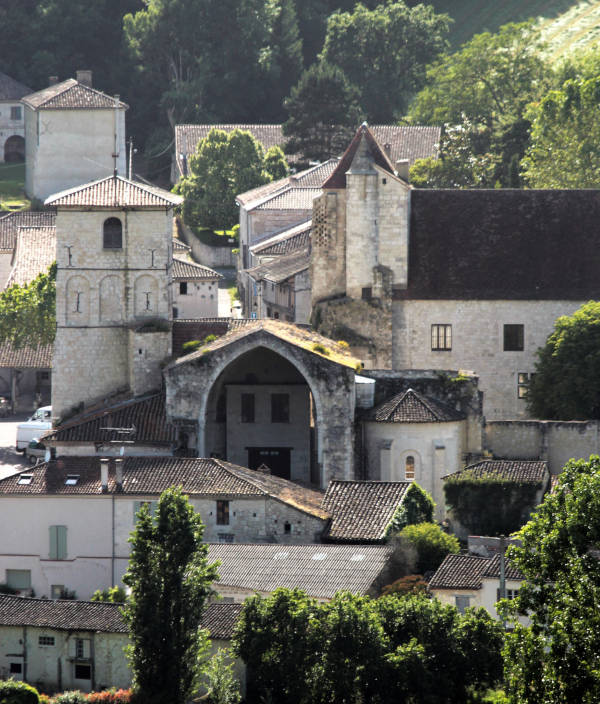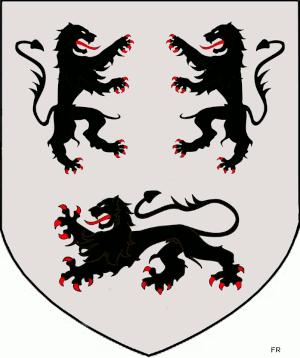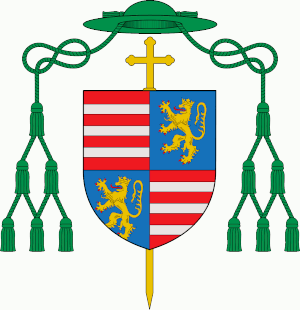The Abbey of Saint-Maurin
Its history

Saint-Maurin Abbey
Key events
- 1082: foundation of the Benedictine abbey
- 1097: consecration of the abbey church
- 11th – 12th centuries: construction of the Romanesque abbey
- 13th century: expansion of the abbey’s possessions
- 1346-1356: destruction during the Hundred Years War
- 1464: new governance, commendam
- 1500-1545: construction of the abbey chateau and the north wing
- 1565-1580: destruction during the Wars of Religion
- 1604 : beginning of the restoration
- 1645 : reform of St Maur
- 1790: the French Revolution, the abbey shared between the municipality and private owners
Why such an important abbey near Agen? The legend of Saint Maurin
The Abbey of Saint-Maurin was built to venerate a victim of the faith. Maurin is said to have lived his short life in the 6th century; at the age of 12 he went to Capua (Italy) to be baptized by Bishop Germain, who taught him philosophy for seven years. On his return, he suffered martyrdom near a fountain on the borders of Agenais and Cahorsin. This edifying death and the miracles that followed inspired the establishment of a cult and the construction of a basilica, later replaced by a monastery.

Two capitals of the choir illustrate the life of Saint Maurin
On the left, his head is cut off (cephalophoria), on the right, he walks, his head under his arm towards the fountain.
These capitals are exceptional in the delicacy of their line, their proportions, the seriousness of the faces and the restraint of the attitudes. They are ranked among the most beautiful in Aquitaine.

The creation of the abbey, a family story!
Between the 10th and 11th centuries, the land and the abbey belonged to lay people, the viscounts of Gabarret, then by marriage to the family of Durfort, powerful local lords. In 1082 Bernard-Raymond de Durfort donated the abbey to the abbot of Moissac, Hunaud de Gabarret.
The monks are thus Benedictines affiliated to Cluny. The Benedictines follow the rules decreed by Saint Benedict of Murcia.

The construction of the abbey and its development
In the 11th century, the first part built was the southern arm of the transept flanked by a semicircular chapel dedicated to Saint Benedict (St Benoit). It received its dedication on January 3, 1097, as evidenced by an exceptional lapidary inscription still in place on one of the walls. The bell tower was erected at the same time as the southern arm.
In the 12th century, the construction of the choir and the north transept was begun; the construction of the nave followed.
The abbey’s domains, which became very prosperous in the 13th century, included twenty-five parishes in the dioceses of Agen and Cahors. These dependencies brought in substantial income: in 1789 the last abbot of Saint Maurin, Joseph de Galard, declared 25,000 pounds of income, or the equivalent of 250 times the minimum annual salary of the time!
The Black Prince and the Earl of Derby: the vicissitudes of the Hundred Years War
In around 1346 the Earl of Derby (Henry, Duke of Lancaster), and then in 1356 the Black Prince (Edward, Prince of Wales), made incursions into the “Pays de Serres”, pillaging, destroying and burning villages and churches.
The cloister, to the north of the nave, built in the 12th and 13th centuries, as well as the buildings which border it were all largely destroyed on several occasions and rebuilt a little differently. The abbey and the village remained dormant for almost a century. Little by little normal life resumed.

And the governance of the abbey changed! Until then, the monks had elected their abbot. But towards the end of the 15th century, in 1464, the governance of the abbey changed to a commendam to the benefit of the Lustrac family. The commendam, administration of the abbey entrusted to the lord, allowed ambitious reconstruction campaigns, favouring the personal prestige and comfort of the abbot.
Three members of the Lustrac family succeeded one another: the first, Herman, resigned quite quickly in favour of his nephew, Bertrand, barely 16 years old in 1481. Under his abbacy in 1500 the chateau (or abbey house) was built in late Gothic style. Another nephew, Jean de Lustrac, succeeded him, he restored the cloister, the chapter house, the cells of the monks in the north wing, which had a square tower at its end. These building works were completed in 1545.
From 1565 to 1580, unrest in the Pays de Serres! Reform and reconstruction
This is the period of the religious wars. The abbey was again ransacked and burnt.
It was not until the arrival of Abbot Pierre de Villemont in 1604 that the abbey was restored. Prosperity seemed to return in 1624.
His successor, Abbot Mathurin Mangot, introduced the reform of Saint Maur in 1645. Dom du Laura, a Maurist, wrote a detailed history of the abbey, and Dom Plouvier drew up the plans in 1657.
The gardens, the walls, the defensive turrets, of which only one remains, the fishpond, and other additions, were made at the end of the 17th century.
Discover the cloister as it must have been in the 17th century, watch the video!
Walk in the 17th century - the cloister
1789, the start of the French Revolution
Revolutionary unrest began in the village on February 6, 1790. The revolution did not spare the abbey.
The abbey chateau, bought by the municipality, was partly preserved. Some families acquired the monks’ buildings, the choir, the apse and the apsidioles of the transepts, which were transformed into dwellings. The walls of the nave had to be blown up to destroy them. The stones became a quarry and were sold.

And today ?
Despite all these disasters, the abbey did not experience any brutal reconstruction during the 19th century. It still exists through its remains covering the entire area of its original enclosure.
For further information
- Que vive la mémoire … : the legend and history of Saint Maurin; processional songs
- History of architecture: the Romanesque work, the Gothic abbey chateau, alterations, grandeur and decadence of a Benedictine abbey.
